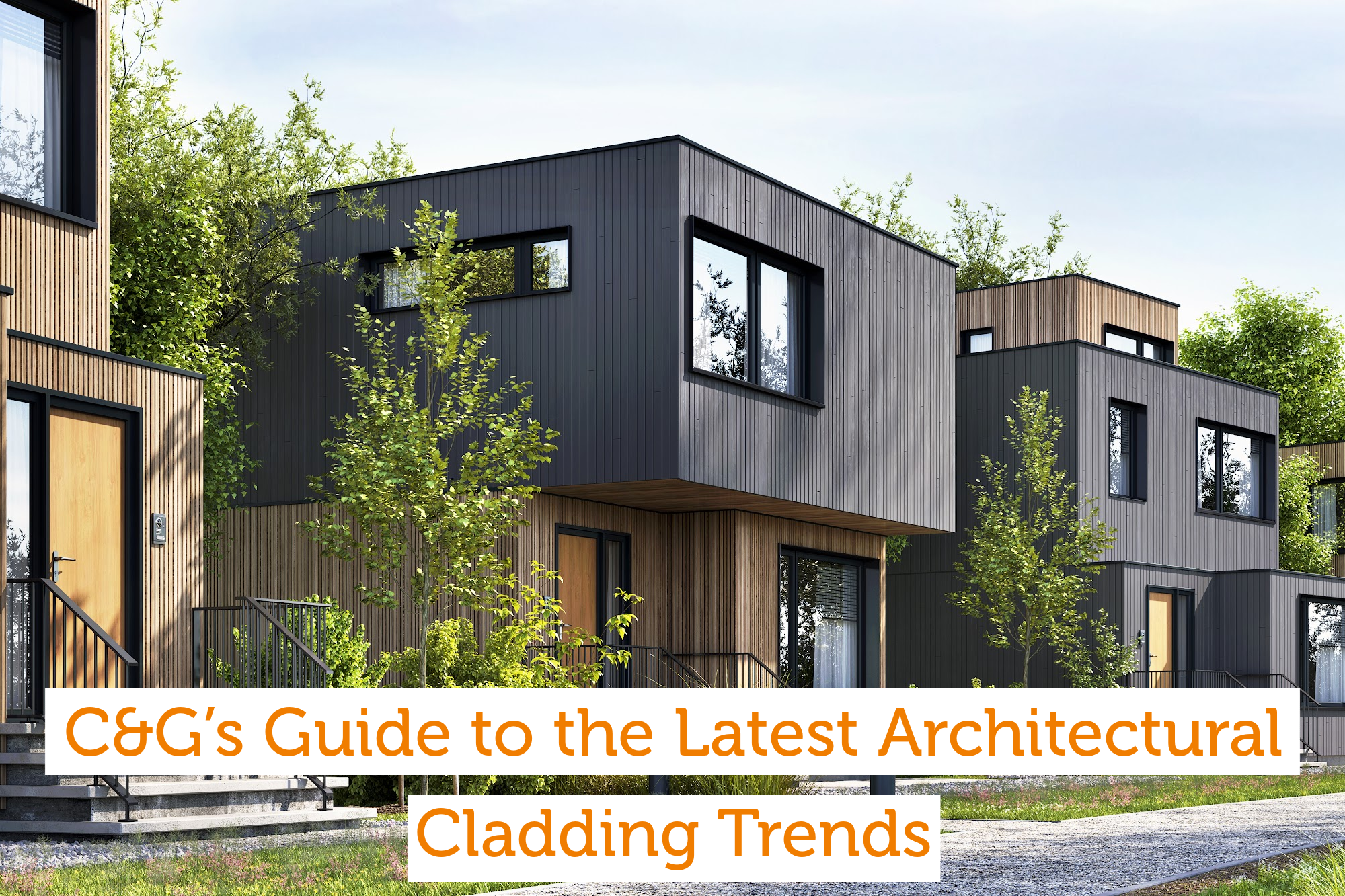C&G’s Guide to the Latest Architectural Cladding Trends
While it’s true that architectural cladding systems protect the exterior of your property from the harsh elements of Australian weather conditions, it also serves a purpose beyond just function. Cladding is also one of the most effective ways to create a unique and appealing facade for your property, which has the potential to significantly increase its street appeal.
There’s an abundance of cladding materials to choose from these days, but there are some that are at the forefront of current architectural trends for new home constructions, refurbishments and renovations. In this C&G blog we take a look at a few that are just as stylish as they are functional.
Fibre Cement Cladding
Modern fibre-cement cladding gives any classic Australian home its trademark weatherboard facade, and is perfect for contemporary or coastal-style homes. It comes in a variety of styles, including vertical or horizontal boards or large panels.
One of the greatest benefits of this type of cladding is its durability: it resists damage from water and fire and has a low risk of condensation, which makes it ideal for both humid environments or areas prone to bushfires. Furthermore, it’s easy to install and doesn't require much in the way of upkeep!
Pre-primed, the boards are favoured for their classic style, while panels such as James Hardie's 'Matrix' range offer a minimalist look perfect for more contemporary styles of buildings.
Non-Combustible Weatherboard Cladding
Though the look and feel of weatherboards is sought after, they do require regular maintenance and can actually be seen as a drawback for potential buyers. Thankfully, nowadays you can still achieve the aesthetic of weatherboards without the hassle of additional maintenance.
Both Knotwood and Decoclad have striking timber-look boards made from high-quality, durable and marine-grade Aluminium that give any contemporary home the warmth and texture of natural wood cladding minus the maintenance costs.
Shiplap Cladding
Shiplap cladding is a tongue and groove-like system where the boards slot into each other and is a popular choice for homeowners due to its stylish modern look with warm rustic charm.
As well as its good looks, it works hard in the functionality department, with its name derived from the style of cladding long used on ships that provided an impressive weather-proof barrier on the open seas! The seal formed from the profile of the wood is one of design ingenuity, in that its both tight enough to provide exceptional protection from the likes of wind and water, while also offering enough give to allow for the expansion and contraction of the wood in changing climates.
Stone Veneer
Often used in conjunction with another exterior material, stone cladding has enjoyed a resurgence of late and has become popular for Hampton-style homes. Cultured stone is modelled on the look, feel and texture of natural stone, however is man made. This makes it more affordable while still providing a very authentic aesthetic.
There’s a wide range of different styles on the market, so whatever look you’re going for, you’ll be able to find something that suits your tastes.
Brick Cladding
Still the most common exterior surface in Australia, brick continues to be in favour as a cladding for new builds. However, like stone, it is increasingly combined with fibre cement or weatherboards for first-floor additions.
The beauty of brick is that it won’t fade, warp or rot and has excellent thermal performance, so you get an extra layer of insulation to keep your home cooler in summer and warmer in winter.
Trends in recent years have included darker hues of bricks, however recent styles are tending towards the lighter colour spectrum to emulate the ever-popular Scandi style. Depending on your chosen aesthetic, you can choose bricks in various sizes, shapes and colours.
